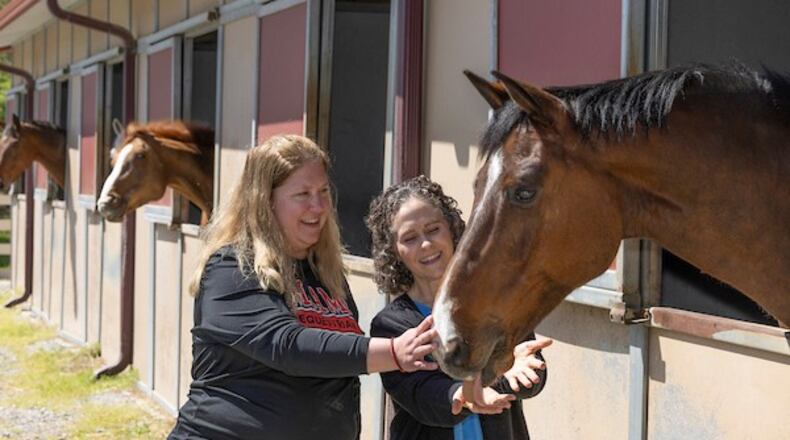And for the first time this spring semester, the university’s Student Counseling Service is having participating students work with horses via Miami’s Equestrian Center, located on the Oxford campus’ eastern border, said school officials.
“We were offering it one hour a week just to see if anyone would come. We had to expand it to two hours a week, and we have people who are waiting now,” said Jennifer Young, a licensed psychologist and associate director for community engagement in the Student Counseling Service (SCS), which also coordinates the school’s dog therapy program.
“It’s very cathartic for students, and they love it.”
Heather Pinnick, director of Miami’s equestrian center, is excited to be part of this partnership.
“It’s super unique that we are on campus, that we have horses, especially at this school that is not an agricultural school,” Pinnick told Miami officials.
Students do not ride the horses. The program offers unmounted therapy, with a student and counselor engaging one-on-one with each other while grooming the horse.
“The official term in our field is equine psychotherapy,” Young said. “A lot of students may not know what that means, so we’re calling it horse therapy for short.”
According to Miami officials, the pilot program’s creation was pushed by 1990 graduate Mary Beth Canfield, a former school equestrian team member who now serves on Miami’s Foundation Board.
Canfield and her husband were on campus for meetings last November and were talking to Steve Large, assistant vice president for health and wellness, about the success of the school’s dog therapy program.
She said Ryan Elias, chief development officer of the Miami University Foundation, “brought up the concept of equine therapy as a way to reach more students, and it’s also an area he knows I am passionate about.”
Pinnick had also dabbled with the concept on an informal basis by incorporating horses into student mental health support and backed the idea of making some of the center’s horses available.
Pinnick, who has worked at the equestrian center for 19 years, said, “horses are really intuitive of how you’re feeling. I think they’re offering a little buffer for the therapy sessions to the students who may feel comfortable because they are doing an activity and have the horse as that focus.”
Young said she and the student start at the stall to put on a halter, then they lead the horse to the indoor cross-tie grooming area where they move between using a curry comb to remove dirt from the horse’s coat, a soft brush, tail brush sprayed with detangler, and a hook pick.
“As we’re grooming and picking out their hooves, we’re talking,” Young said, adding that this kind of therapy has been found to reduce anxiety and depression and also is good for those who have dealt with trauma.
Canfield, who owns and rides horses, said, “I know many people in the field of equine therapy and have learned that it can be beneficial in reaching people in a deep and unique way.”
About the Author

